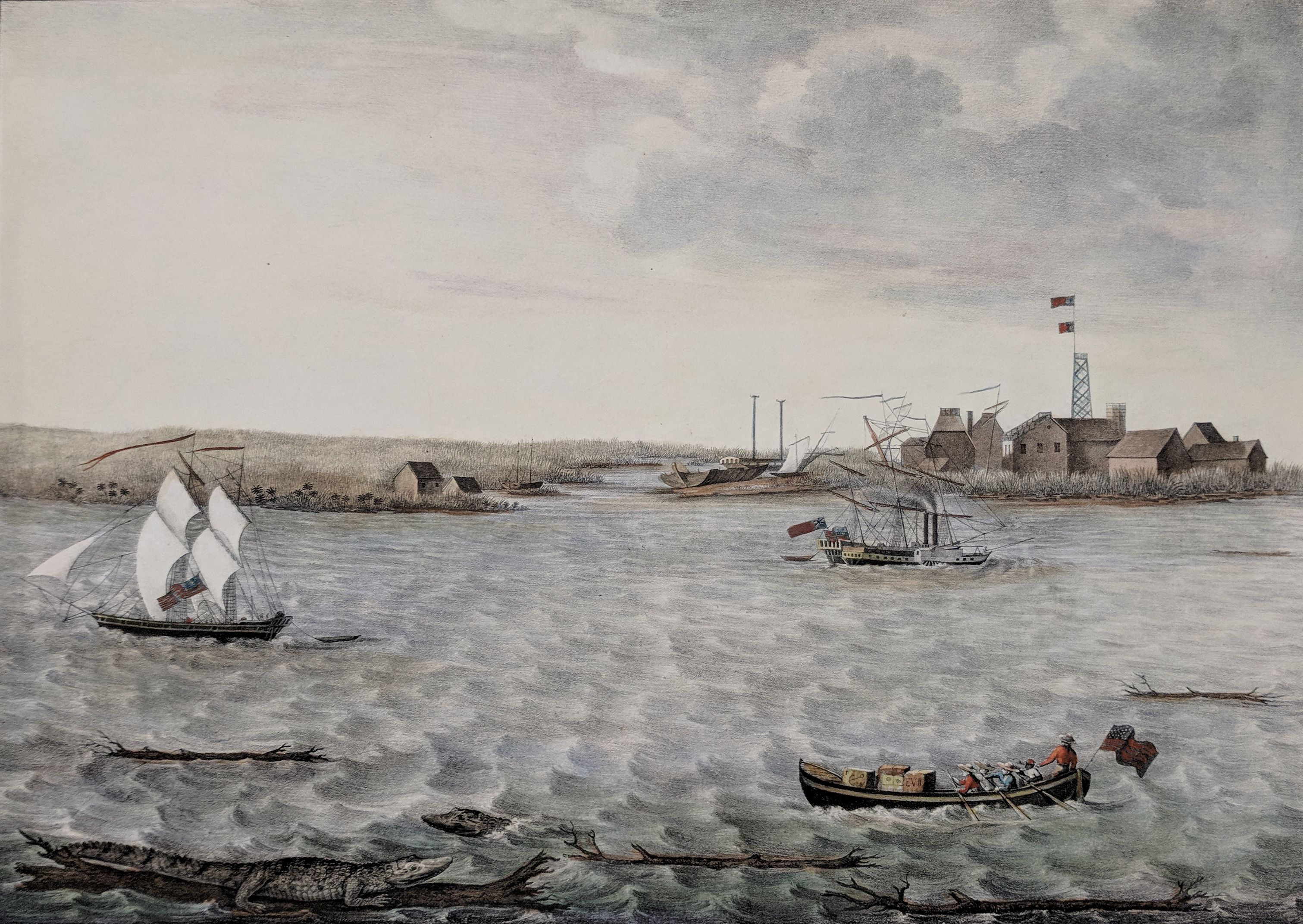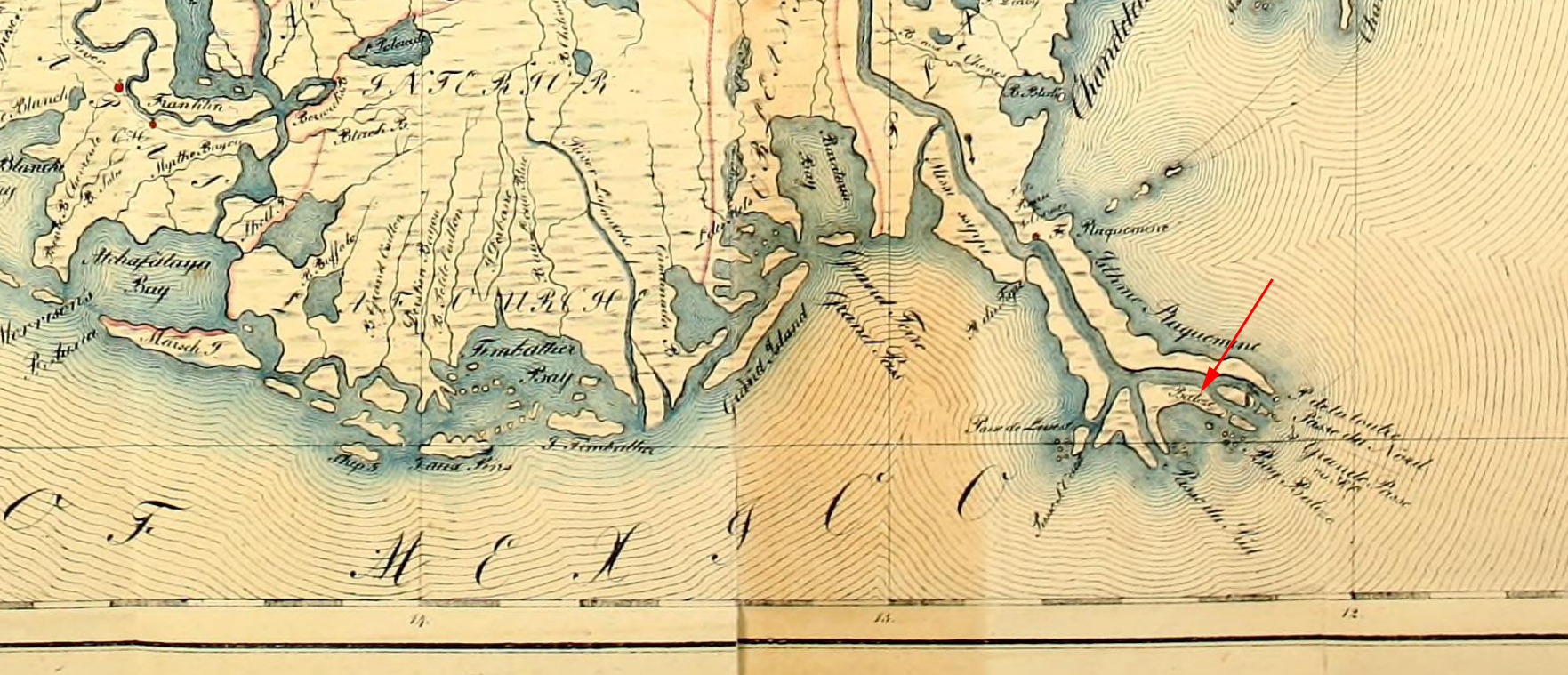While researching objects for the upcoming Gallery Crawl I stumbled across a really interesting engraving of a village in Louisiana I had never heard of. It was called La Balize and it sat at the very tip of Louisiana (Plaquemines Parish–that’s the low marshy piece that pokes out into the Gulf of Mexico).
La Balize was founded in 1699 when the French erected a simple wooden fort and a little later a lighthouse-type tower in an attempt to control passage on the Mississippi River. The town was vitally important for the role it played in overseeing the movement of ships on the river and was chiefly inhabited by fishermen, river pilots, and their families. The pilots were critical in helping ships navigate to and from the port of New Orleans through the shifting passages, currents and sandbars of the Mississippi River delta.

The image is interesting because the artist was Friedrich Paul Wilhelm, the Fifth Duke of Württemberg, one of the most important explorers of the Upper Mississippi and Missouri Rivers. Our engraving is based upon an image drawn on Wilhelm’s first expedition to the United States between the years 1822 and 1824.

In describing La Balize, Wilhelm stated “The few wooden houses which make up the place stand on piles in the midst of the water and slime, between high reeds; and one house can only be reached from another along plank footpaths.”
Wilhelm also noted the presence of alligators and that “exceedingly large numbers” of them inhabit the banks. “It seems a mystery how these obviously voracious creatures are able to find prey enough to still their hunger.”

As you would expect in an area as swampy and low as Plaquemines Parish, La Balize was regularly damaged or destroyed by hurricanes. It was washed away in a hurricane of 1740 and rebuilt on the newly emerged island of San Carlos which itself was severely damaged several times and eventually destroyed. By 1853 La Balize, also called Pilotsville, had rebuilt in the Southwest Pass, on the west bank of the Mississippi. After the hurricane of September 14–15 of 1860 took the village down yet again La Balize was abandoned. A new settlement for the pilots, named Pilottown, was constructed about five miles upriver on the east bank of the Mississippi, just above the Head of the Passes. Hurricane Katrina wiped the settlement out for good in 2005.
NOTE: For those of you who are geeks like me, yes, steamboats were on the Mississippi as early as 1811. By the time of Wilhelm’s visit in 1822 there were likely hundreds of steamboats, although the one he depicted seems to be an earlier design (sidewheel rather than sternwheel).